
On the 2nd April 2005, BBC Four broadcast the BBC’s first live drama for over 20 years: a remake of The Quatermass Experiment, starring Jason Flemyng. It had a mixed reaction at the time – and indeed since – but I thought it was absolutely fabulous. Both as a programme in itself… and to finally watch a complete version of that first Quatermass story which doesn’t involve Brian Donlevy.
On the 31st October 2005, the DVD of the programme was released. Right at the beginning of the show, this caption was added:
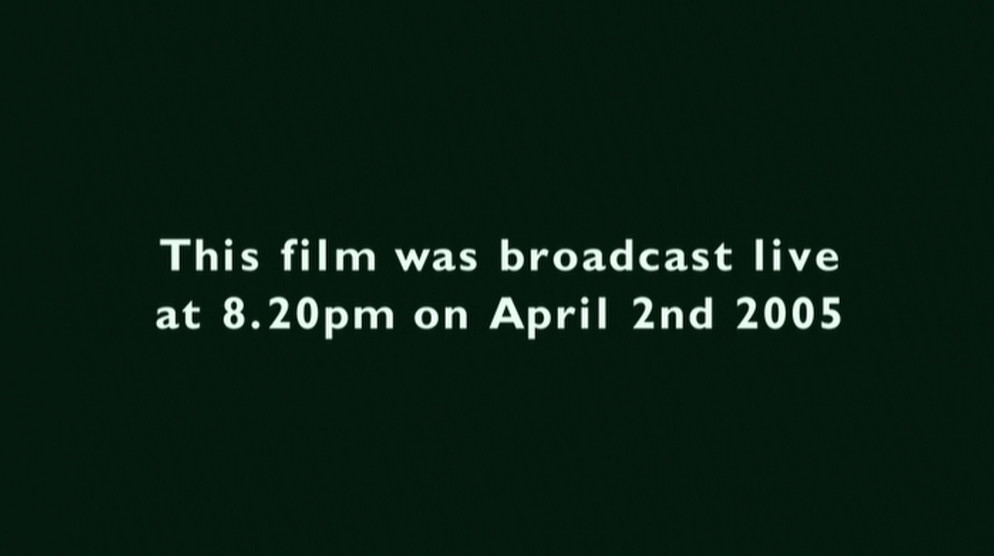
This caption is a blatant lie.
The version of the programme on DVD is not what audiences saw live on the 2nd April. It is, in fact, an entirely different edit. If you’re familiar with the programme, perhaps you’ve heard that one scene was replaced with a version from the rehearsal due to an actor drying, or that an off-screen crash was trimmed. Both are true; however, this is far from the full story. The programme was extensively re-cut, with many changes made across the entire programme.
I think you can see where this is leading. Below is a list of all the changes made to the DVD version compared to the programme’s original broadcast. All times given are for the DVD release, so even if you haven’t got access to the original version, you can still tell at which point a change was made.
(0:16) CHANGE
Captions on the opening title sequence have been completely redone and retimed – broadcast version on the left, DVD version on the right. Poor old Bill Boyes has his credit shrunk next to Alison Willett’s name. Aw.
Original broadcast version
DVD version
(1:36) CHANGE
You can see it slightly above, but the first live action scene reveals it in full: the DVD version has a rather odd colour grade compared to the original broadcast. The entire production is heavily tinted green:
Original broadcast version
DVD version
This is so extreme that even when the screen goes black… it actually goes very very dark green instead. (You can see this in the screengrab of the opening caption above.)
(5:40) NOTE
Amusingly enough, some extraneous murmurings over a (rather psychedelic) shot of the ship aren’t removed!
(6:37) CHANGE
Quatermass’s line “Velocity?” is louder.
(7:55) REMOVAL
In the first of many instances of scene endings being tightened, we cut away from the shagging car pair a couple of seconds earlier.
(8:13) REMOVAL
Quicker cut to the night wide shot, and the music cue comes in sooner. Extraneous crew sound removed.
(10:46) ADDITION
An additional cutaway to the crowd as the rocket is opening:
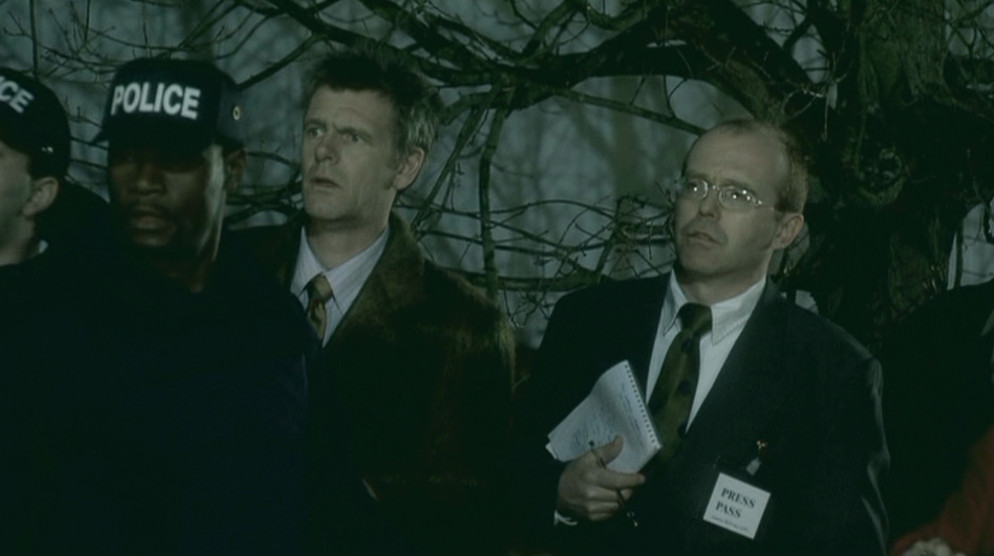
(12:53) REMOVAL
A full four seconds is cut from the end of the scene where the shagging couple are interviewed; originally, after the interviewer asked “And what were you doing there, Mr. Matthews?, the scene hung on them, and he awkwardly adjusted his tie.
(14:17) REMOVAL
Cuts away quicker from Paterson investigating the rocket to Fullalove.
(15:55) CHANGE/ADDITION
Oddly enough, the audio of Judith’s “Try darling” as she tucks in Victor is spliced in from a different take. The scene is also extended for a beat at the beginning – unusual, in that most edits on the DVD are tightened, not extended.
(17:32) ADDITION
As Judith reaches out for Victor, we get a different angle on Victor, and an additional few seconds of him reacting to Judith’s touch. The audio of him reacting is laid over Quatermass’s entrance in the broadcast version. In fact, if you listen to the DVD version carefully, on Quatermass’s entrance at 17:43 you can hear Victor’s gasps repeated in order to fill the gap now present in the soundtrack!
(20:46) REMOVAL
Edit from Jane Hill to Blaker tightened.
(23:55) ADDITION
Blaker/Lomax scene held for a beat longer at the end.
(28:19) REMOVAL
Now, this is very peculiar. The broadcast version includes this cutaway of Quatermass whilst Louisa talks to Victor, which is missing on the DVD:

Oddly enough, the removal of this shot means that on the DVD version we stay on Louisa and Victor… and get the camera awkwardly zooming in on the pair. Was the decision made that staying with the pair instead of cutting away was more dramatic, and was worth the technical trade-off?
(29:40) ADDITION
During the astronauts training montage there is an extra cutaway shot of Briscoe:
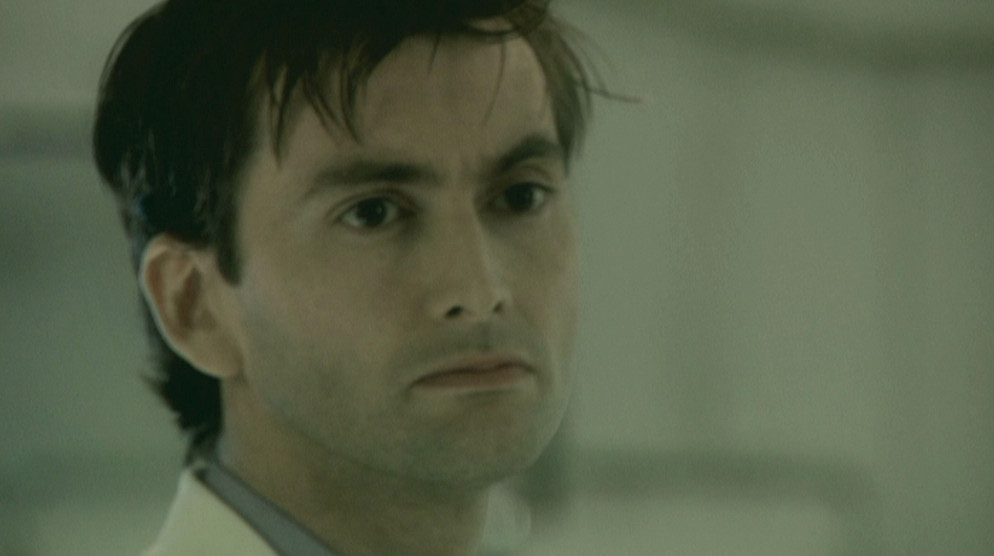
(29:49) CHANGE
One of the most fascinating changes of the lot. The cutaway to Judith during the astronauts training montage is an entirely different shot:
Original broadcast version
DVD version
In the broadcast, she is impassive: on the DVD, she is upset and looks down to the floor – actively changing how her character is perceived during the scene.
(33:07) REMOVAL
The start of Jane Hill’s line “The Home Office has confirmed…” is overlaid out of vision over the end of the previous scene; originally, it cut to her in vision before she starts speaking. The end of the scene is also tightened.
(35:36) ADDITION
As Judith turns round to Victor after her line “Oh, do you remember the asters you planted? They’re really coming along”, we get an additional shot of Victor:
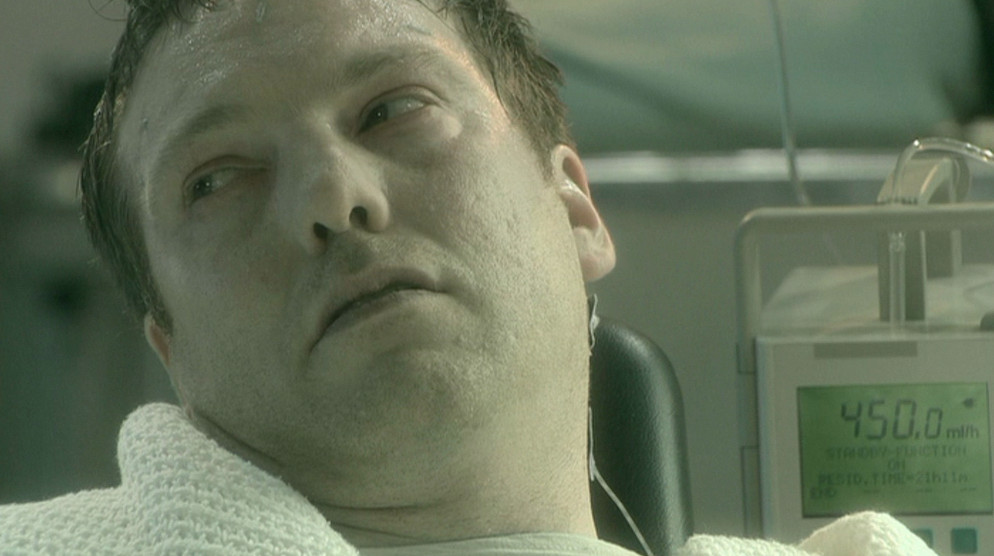
(40:19) REMOVAL
Edit tightened when cutting to Paterson in the bar. However, now we come to one of the most famous aspects of the live show:
Original broadcast version
DVD version
Sadly, Pope John Paul II had the temerity to die whilst BBC Four was doing the BBC’s first live drama in decades – so a (rather frightening) breaking news strap was added by presentation. Naturally, the DVD doesn’t include this.
(42:52) CHANGE
The footage of the astronauts’ alien encounter was altered substantially on the DVD version. First of all, the original broadcast:
And here is the DVD version of the scene:
The DVD version vastly increases the strobing effect; the scene now feels far less immediate and in the moment. The other difference is that the white flashing effects are toned down significantly in the DVD version compared to broadcast.
As to why? This is pure speculation, but on the commentary, we get the following about the scene from Trevor Hampton, the Outside Broadcast Director:
“And then we had a real problem because the flashing – we had flash problems with epilepsy. We’re not allowed too many flashes and things, so that caused a bit of grief as well.”
Filling in the gaps, perhaps he’s talking about the original, broadcast version of the scene here – hence its toning down for the DVD version?
(46:11) REMOVAL
A tighter edit from Briscoe/Victor/Juliet into the walk-and-talk with Quatermass and Lomax. This removes Briscoe’s “Victor, can you hear me?” from the broadcast version, which crashed into the next scene rather unpleasantly just as it cut away.
(48:00) REMOVAL
End of press conference tightened.
(48:17) REMOVAL
The second and final breaking news strap is not present:
Original broadcast version
DVD version
(48:59) REMOVAL
A full four seconds of Victor grabbing the cactus is removed.
(50:00) REMOVAL/ADDITION
Edit tightened as Quatermass and gang re-enter the press conference. A camera shutter sound effect is also added.
(51:02) REMOVAL
As Lomax walks off saying “Get the police on full alert”, the end of scene before we cut to Jane Hill is significantly tightened; a full five seconds of Quatermass standing there is removed.
(52:02) CHANGE
Here we go. The most famous change of the lot. Adrian Bower dried during this scene with Paul Broughton, and the whole scene was replaced with the tech rehearsal version on DVD. Sadly, I’m too much of a gentleman to actually include the moment where he dries on the original broadcast in this article.
Oh, who am I kidding? Here you go:
And for comparison, the DVD version:
(57:47) REMOVAL
Another very odd one. When the young lad pulls his raygun on Victor, this reverse shot is removed:
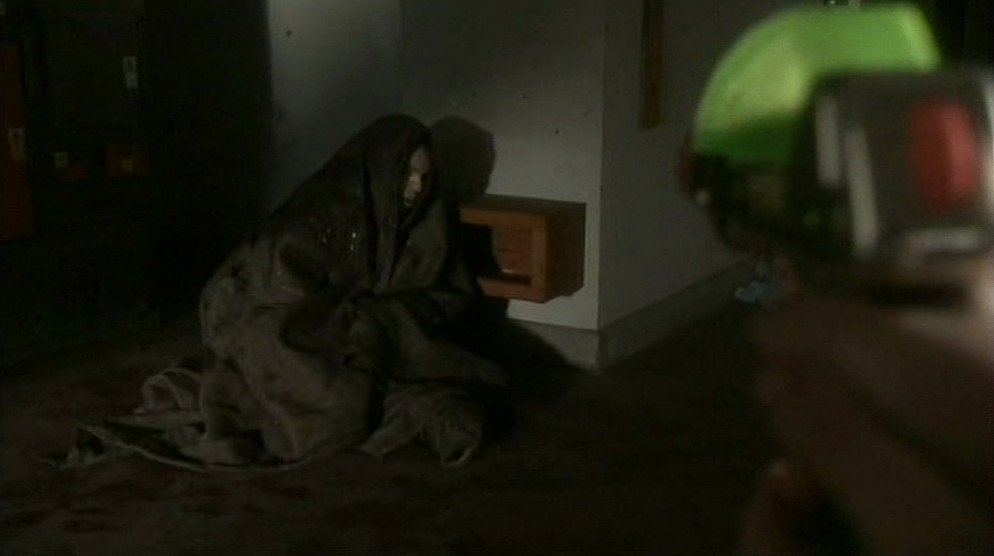
Presumably this was got rid of for artistic reasons rather than accidentally. Did they think we saw too much of Victor’s face? The end of the scene – where we see a close-up of Victor’s face – is also trimmed slightly on the DVD, backing this theory up.
(59:58) REMOVAL
The end of the scene where the Chemist sees Victor is trimmed; we don’t actually see him fall to the floor, unlike the broadcast version.
(1:00:18) CHANGE
We cut to the close-up of the boy far sooner, on the line “I don’t know.”; the original broadcast keeps on the wide shot until the line “No sir. I don’t know anything about him sir.” End of scene is also slightly tightened.
(1:01:12) REMOVAL
Scene of Victor destroying the chemists is tightened at end.
(1:01:47) ADDITION/CHANGE
Scene with Quatermass/Lomax slightly extended at end. This leads into a different choice of city establishing shot – the original broadcast version zooms down to street level to meet Victor, while the DVD version keeps its distance:
Original broadcast version
DVD version
(1:07:49) REMOVAL
The other famous part of the original broadcast. As Lomax walks out of shot after telling Quatermass to “Stick to the facts!, there’s an almighty crash. This scene is trimmed so the crash is removed.
Oh, go on then:
(1:10:12) NOTE
Strangely enough, there’s a production error here that isn’t fixed on DVD. Background audio from the following scene is briefly heard over the footage of the cells dividing; clearly a fader was opened too early. It’s strange, when so much effort has gone into tightening up scenes in the DVD version, that something as easy to fix as this wasn’t corrected.
(1:11:19) REMOVAL
Start of scene with Lomax tightened.
(1:13:52) REMOVAL
End of laboratory scene tightened.
(1:14:43) REMOVAL
Start of scene with Lomax tightened, removing his “Now”.
(1:15:29) CHANGE
DVD has different angle as Quatermass points at the monitor:
Original broadcast version
DVD version
(1:16:45) REMOVAL
End of laboratory scene tightened. Brief piece of extraneous noise removed.
(1:17:04) REMOVAL
End of scene tightened – Lomax’s slightly off-mic “Hello?” removed.
(1:18:44) REMOVAL
Extraneous noise from previous scene removed over shot of the Thames.
(1:18:51) REMOVAL
Start of scene with Fullalove reporting is tightened.
(1:20:45) REMOVAL
Start of scene with Lomax briefing Quatermass tightened.
(1:25:25) ADDITION
On the close-up of Briscoe after Paterson runs into the Tate Modern, background sound has been added and the incidental music amplified; due to a sound mixing error this shot was nearly silent on broadcast.
(1:25:32) CHANGE
Immediately afterwards, the wide shot is replaced with two close-ups:
Original broadcast version
DVD version
(1:30:07) REMOVAL
End of scene with Briscoe yelling at the army trimmed; we cut away extremely sharply after he says “This is the tape!”
(1:33:05) CHANGE
A rather horrifying scream is added to the soundtrack as we cut from Quatermass inside the Tate to the army personnel outside.
(1:33:50) CHANGE
The shot of Quatermass turning round to “see” Victor is slowed down.
(1:34:26) REMOVAL
A close-up is removed on Quatermass’s line “Go from it now!”, instead sticking with the wide shot:
Original broadcast version
DVD version
(1:34:33) CHANGE
Following straight on from this, Quatermass falling to the floor at the end of the encounter in the Tate Modern is slowed down. A brief close-up as he falls is also removed – again, sticking with the wide shot:
Original broadcast version
DVD version
(1:35:30) CHANGE
Much like the opening credits, the closing credits have been completely redone and retimed.
Original broadcast version
DVD version
A short discursion about repeats
The above details the differences between the original broadcast version of the 2005 Quatermass, and the DVD release. However, it’s worth pointing out that this isn’t the whole story. As well as its original showing on the 2nd April, the programme was also repeated numerous times on BBC Four: eight, according to BBC Genome. The first repeat was on 6th April 2005, and the last to date was on the 2nd September 2008.
In researching this article, I briefly analysed a repeat from 2006. It seems identical to the DVD version, except that the green colour grade is missing, along with the added opening caption. What would be extremely interesting is to check out the two repeats from the 6th April 2005 and the 4th July 2005: the two versions in-between the original broadcast and the DVD release. Are they the same as the original broadcast? Are they the same as the DVD release? Or are they a different edit entirely, midway between the two?
All worthy of further investigation, of course. But the two versions I compare in this article are the two most important: its very original showing, and the one publicly available now. So whilst it may be simplistic to narrow down the discussion to just these two separate versions, it’s worth doing purely for the sake of clarity.
Up until now, I’ve tried to keep things purely factual. Now, however, is the time to ask a simple question about the version of the 2005 Quatermass released on DVD.
And that question is: seriously, what the fuck, man?
The intention of the re-edit seems clear. Tidy things up, remove obvious mistakes, and make it as technically good as it can be. But let’s take a look at how this programme was sold to the nation. Here is the Radio Times synopsis for the show:
“Be prepared to be terrified once more as the cult sci-fi classic is brought up to date in the BBC’s first live drama for over 20 years. A crashed rocket holds an alien secret when the lone survivor undergoes a mutation. With Jason Flemyng, Adrian Dunbar and Andrew Tiernan.”
The big selling point about the show is that it was billed as “the BBC’s first live drama for over 20 years”. The commentary track on the DVD is all about the complexities of the live aspect. And in the documentary on the DVD release, Executive Producer Richard Fell has this to say:
“The ‘Television on Trial’ season was designed to look at successful formats, historic formats from the golden age of television, and see whether they would stand up. The Quatermass Experiment was an incredibly successful live drama, one of the first when it was broadcast – and so we wanted to explore whether that format, and indeed whether that story, would carry the same kind of weight today as it did then.”
In other words: the fact that the programme was live is integral to the show. It’s vital. It’s not a side issue, or a production curiosity. It’s the very heart of the programme. If a nice, clean, tidied up version was what everyone wanted, why wasn’t this production just entirely pre-recorded?
It’s worth tackling head on the justifications given by the programme makers for these edits. Producer Alison Willett defended the changes in Dreamwatch when the DVD was released:
You’ve removed some live mistakes, why didn’t you include them as deleted scenes on the DVD?
They’re tiny things. There was an occasion when an actor dried and he’d done it really well the night before and it wouldn’t be fair to do that. And there was another occasion where an actor crashed off set and again it didn’t add anything to it. Apart from that, some of the edits were a bit loose, so again we just tightened things up.
Firstly, I think the description of the changes as “tiny things” is disingenuous. Two of the most memorable parts of the live production are Adrian Bower drying, and the crash as Adrian Dunbar exits a scene; to remove those most memorable parts of the show and then call them “tiny things” is just odd. It’s utterly peculiar to release the programme on DVD with some of the best-known parts of the show gone.
But even if you don’t buy that: in this article, I have listed nearly 50 changes made to the programme between its original live broadcast and the DVD release. (I wouldn’t be surprised to find I’d missed the odd one either, especially when it comes to the soundtrack.) Even if you consider every single one of those changes to be “tiny things”, the cumulative effect of them is nothing short of a major re-edit of the programme.
As for her description that Adrian Dunbar’s crash “didn’t add anything”: rubbish. Did it add anything to the plot, or to Lomax’s characterisation? No. But part of the joy of a live production is how easy it is for the production to go wonky; it’s simply fun to see reality crudely intruding. If we want to intellectualise it, it’s also the kind of event which is the very essence of doing drama live – the tension between building a world, and the ease in which you can come crashing out of it.
But on the DVD version, it’s all cleaned up and removed, all for the sake of professionalism. But professionalism here means making a piece of television far less interesting. The tension has gone, and so has the point. Without that tension, you might as well be watching something recorded in the traditional manner, with all the advantages that brings. What we’re left with is a halfway house which pleases nobody: all the drawbacks of making a programme live, but with none of the benefits either.
Worst of all, perhaps, is her mention of tightening up the edits. Out of all the changes made to the show, this one actually rankles me the most. You can see how many edits were tightened up in my list above; it wasn’t just a few, but happens constantly through the whole programme. This eats away at the entire point of what we’re supposed to be watching. If you’re going to tighten up the cues going into and out of scenes, then you’re not watching a show which was produced live any more. You’re watching something carefully crafted in the edit suite. Fine. But if you’re going to do that, what was the point of doing any of this live anyway?
The worst thing about this aspect is that the cueing going into and out of scenes was generally very, very impressive – in fact, one of the most impressive things about the live version. All this edit does is destroy all that hard work. What you are watching just doesn’t represent how the programme was cut together on the night.
Then you’re left with the interstitial sequences: the long cityscapes, or cells dividing, or POV shots from the monster wandering around the South Bank. These sequences are beautifully atmospheric in their own right, but let’s not forget why they are there: they are so lengthy in order to give the actors and crew time to move into place for the next scene. So if you’re tightening up scenes, then why not cut these right down as well? In the edit used on DVD, there’s no point to any of them being that long. It already fails to be a record of the live production; you may as well trim them right down.
But then, that’s the crux of why editing the show was a bad idea. Those scenes were there to give the actors time to get to their marks: but as I say, they’re also beautifully atmospheric, and the lingering shots help to build up a real sense of dread. Once a programme like this has been made, just because something was either forced upon you, or something unintended happened, that doesn’t mean its wrong. Take the trimming of the scene where the shagging car couple are interviewed; one of my favourite moments in the whole show is the hanging on his reaction, and him awkwardly adjusting his tie. Whether we were meant to hang that long on him in the original live broadcast, or whether it was a mistake, doesn’t matter. The end result is that one of my favourite bits of business in the entire show has gone in the DVD version.
(Random meddling also opens you up to sheer ridicule. Look at the first picture of the remade end credits of the show, and note the stretched “and” – an issue which isn’t present in the original version of the episode. That deserves a reaction which is nothing more considered than pointing at the screen and laughing. Indeed, a lot of the letter kerning in the remade version seems awfully shonky compared with the original. How is that an improvement?)
The elephant in the room with this discussion is Adrian Bower drying; producer Alison Willett maintains “it wouldn’t be fair” to release a version of the programme with that scene included. That gets into a difficult moral – and possibly contractual – tangle. Certainly, in terms of watchable television, it’s far more interesting to see an actor in trouble and then successfully fight himself out of it, than to replace it with a perfect version. For all the panic in Adrian Bower’s eyes, I come out of watching that original scene with more respect for him. He stared death full in the face, and came through it.
Having said that, if the only change made to the DVD version had been the replacement of that scene, I wouldn’t even be writing this article. One change to spare an actor’s blushes is one thing, whether misguided or not: what’s been done to this version of the programme is an entirely different matter. A defence of this edit can’t simply come down to just this particular scene.
For further proof of that, let’s not forget the bizarre colour grade that the DVD version of the show has gone through compared to the original broadcast. I say “colour grade”, but it’s so badly done that it really just looks like “we’ve tinted the entire thing green”. There is a serious problem if your programme doesn’t ever fade to black: it just fades to very dark green instead. I mean, let’s just take as a given about how it fundamentally alters the feel of the show from the original broadcast version, and how that’s a bad thing, and instead consider whether there’s any possible benefit to regrading the programme. And yes, I can perhaps understand wanting to tweak the look of the show so it tilted a little more towards the green. But this is painfully over-the-top. It’s inept to the point where you almost wonder if it was a DVD authoring error. In what world does it make sense to start the show with the black-and-white opening of the original Quatermass – and then tint it green? At times it’s like wading through snot.
All of this would be ridiculous enough. But the final kicker occurs during the scene with Quatermass’s climactic confrontation with the entity. On two separate occasions, the DVD version slows down the footage – footage which we’re supposed to buy as fully live. Not to put too fine a point on things: it breaks the programme. In fact, there are few things you could do which breaks the programme more than slow down footage which you’re meant to buy as a live event. It’s as though they completely forgot what the programme was.
Perhaps the oddest thing about this situation is that the DVD proudly starts with a caption stating what you’re about to watch was “broadcast live”. Which is nothing short of a complete fabrication. This is the production trying to have its cake and stuff it down its lying face. You don’t get to proudly proclaim your programme was done live, and then dick around with it in an edit suite. If you’re going to do that, then the programme has to be judged as a pre-recorded programme: and frankly, as soon as you do so, it becomes far, far less interesting.
Because the 2005 Quatermass was special. The whole point was that it wasn’t like a normal drama. It wasn’t conceived like a normal drama, it wasn’t made like a normal drama, and it wasn’t broadcast like a normal drama. So why does the DVD seem determined to make it like a normal drama – by brute force if necessary?
Maybe we should be careful not to overstate the originality of the 2005 Quatermass. Sure, the BBC billed it as its first live drama for over 20 years. But looking to other broadcasters, Coronation Street did its first live programme in 2000, five years previously – and looking across to America, ER‘s live episode was in 1997. But still, as the beginning of the BBC’s renewed interest in live drama and comedy – through to EastEnders, Two Pints, Bollywood Carmen Live, and next year’s Mrs. Brown’s Boys live episode – it’s extremely important.
The DVD, which should stand as a record of an ambitious and influential production, instead stands as something else: what happens when television is more interested in being “perfect” than being alive.
With many, many thanks to Al Dupres for his copy of the original 2005 live showing of Quatermass, and @Buster_Bear for his 2006 repeat copy.
UPDATE (30/12/15): It’s nice to sneak in a piece on Dirty Feed at the end of the year that’s gathered a bit of interest. Many thanks to all who have read and responded to this article, including Transdiffusion, who came up with a better title than I did. There’s also this piece on Taking the Short View by Andrew Lewin – or, rather, an updated version of his excellent 2013 article, with added mention of my silliness here. (I fully understand why Andrew didn’t make much of a fuss about the colour grade in his original piece – I nearly didn’t here, as I was also worried about it being my setup rather than the actual material. It took quite a bit of research before I was confident that it wasn’t just me.)
And then there’s this amusing MetaFilter thread. For the record: “dried” means to forget your lines, and I promise you I’m not the letterschlocking guy. Whether I’m an asshole or not is a judgement call, however.
Something I do want to talk a bit more about here is a matter which a few people have picked me up on: about the breaking news straps on the original broadcast, pointing people to News 24. Indeed, I had far more to say about these in the original article, but I cut it for the sake of clarity. This resulted in me rather skimping over the matter in the original piece above however, so it’s worth looking at them in further detail.
As a reminder, at two points in the episode, these straps appeared over the programme on its original broadcast:
Original broadcast version
DVD version
Now, it’s “fairly clear” from my article that I think the DVD should have contained the original version of the programme, entirely as it aired live, rather than re-editing it. But: do I think the breaking news straps should also have been included on the DVD? And my answer is: it’s complicated. And to understand why it’s complicated, it’s worth distinguishing between the output of the outside broadcast which was making the live programme, and then the output of the channel BBC Four, as put together by BBC presentation.
Because, of course, any outside broadcast doesn’t just transmit directly to your home. That signal takes a long and complicated route before it gets to your telly. Indeed, let’s quote directly from Quatermass director Trevor Hampton, on the DVD documentary Bring Something Back:
“The most exciting moment of it is when we contact the presentation suite in London at the BBC. They give us a countdown, and it’s the most amazing feeling when you do do live television, and you hear London presentation say “On Air in one minute!”, and then then you get the countdown: 30 seconds, 15, 10… and then you have to run your opening credits, and the whole machine starts to roll.”
So whilst the programme itself is coming from the outside broadcast, everything else which constitutes the channel – the trails beforehand, the ident and announcement introducing the show, the DOG – all come from the BBC Four presentation suite. And what else was added by BBC presentation? Those breaking news straps. They are nothing to do with the actual Quatermass production at all. The production may have advised on when best to place them, but they certainly didn’t add them themselves.
Which creates rather a quandry. After all, we don’t complain that the programme as presented on DVD doesn’t start with the ident and announcement preceding it. Why should the breaking news straps be included, when they’re nothing to do with the production itself? All the other changes detailed above – the different edits, the replacement scenes, the changed shots: those are all aspects of the actual production. But not the breaking news straps, or rather lack thereof. They were never technically part of the production itself in the first place.
Indeed, it’s worth noting that there may not ever have been a broadcast quality version of the programme with those straps even recorded. Certainly, there would be an off-air recording made for compliance purposes which would have included them – but that’s not technically broadcast quality material. And the OB would obviously be recording the programme too – but they’d be recording their mixer output1, without the breaking news straps added further up the chain by presentation.
And yet, whilst those straps were not technically part of the production… they did become part of the live experience of the show. From one point of view, whether they were added by production or presentation matters… but from another point of view, it doesn’t matter at all. It’s a bit like the scene where Adrian Bower dries: no, you wouldn’t choose to have it happen…but once it becomes part of the show, it’s interesting in its own right. It’s apt that a programme which was all about seeing what live television could do, was then crashed by another aspect of live television, entirely out of its control.
So, should the straps have been included on the DVD version? It’s tricky – and as I say, a broadcast quality version with those straps included may well never even have existed, meaning they would have to be recreated anyway. My personal preference would have been to include them – even though they weren’t added by the production, they became part of the programme and the live experience. They ended up being one of the most memorable parts of the live show – just like Adrian Bower drying, and the off-screen crash. However, unlike most of my complaints above, I think there are very valid reasons why you could argue including the straps wasn’t an appropriate thing to do.
If the decision had been taken not to include them though, perhaps it would have been nice to include clips of the straps in the accompanying documentary, in order to give an idea of how they looked and worked. This would also have had the added benefit that you wouldn’t have had to recreate them in order to have a broadcast quality version: an off-air clip in the documentary would have been entirely appropriate.
Still, at least now you see why I didn’t talk about this in the original article. It’s complicated, with no easy answer, and the points I was attempting to make were already complex enough without this additional nonsense. But it’s worth acknowledging that the issue is complicated, and that bleating “I want the programme as originally broadcast” can be rather simplistic – even though it’s usually a good starting point.
And lots of isolated camera outputs too, not just the final mixed programme. ↩

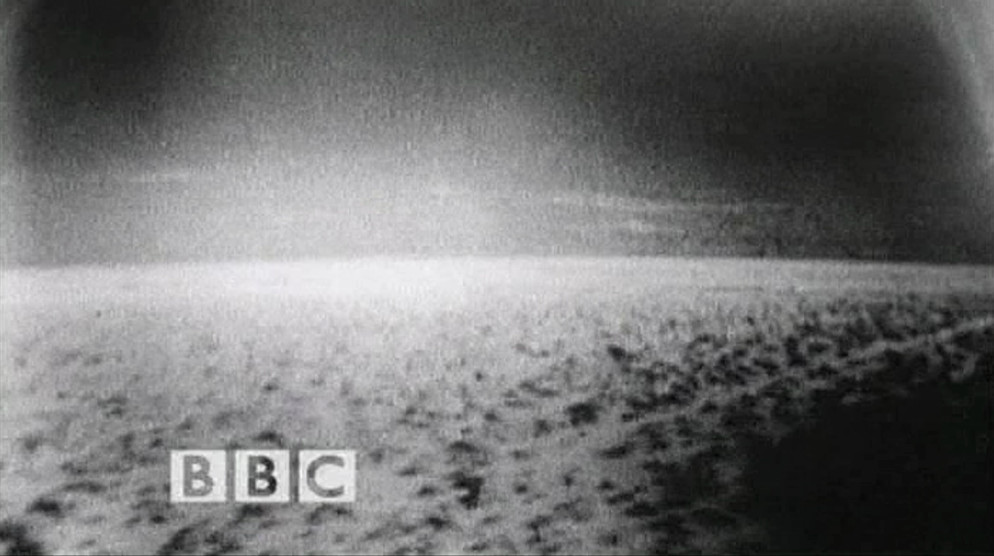
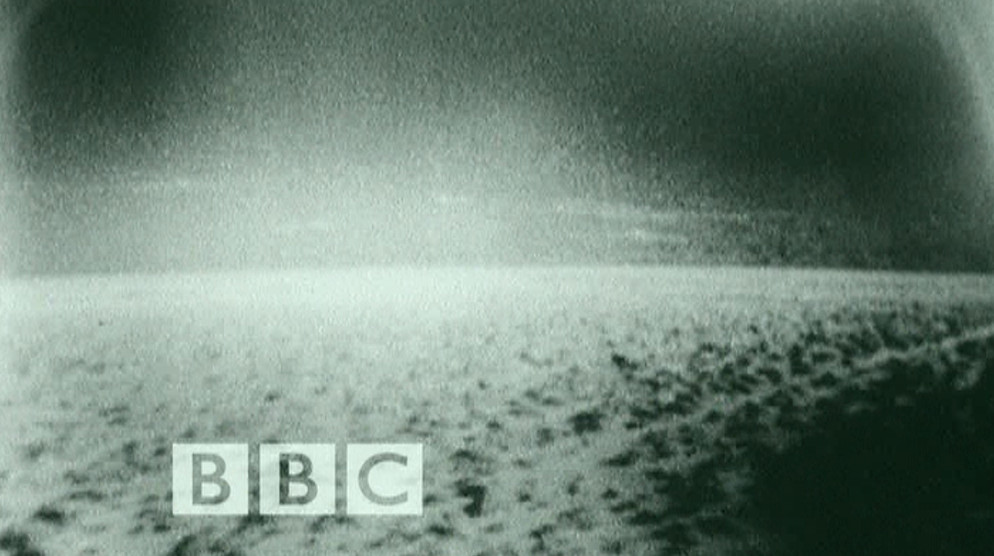

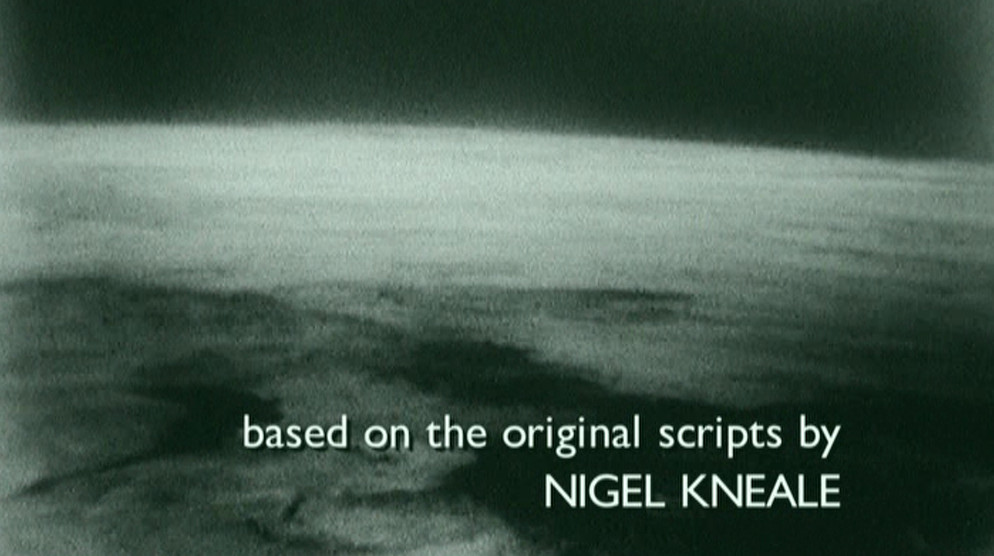
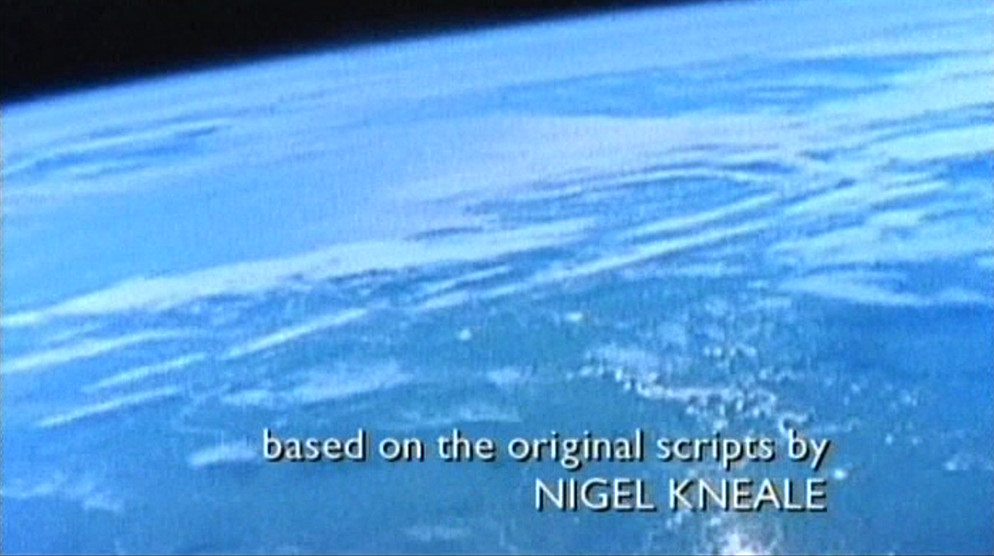




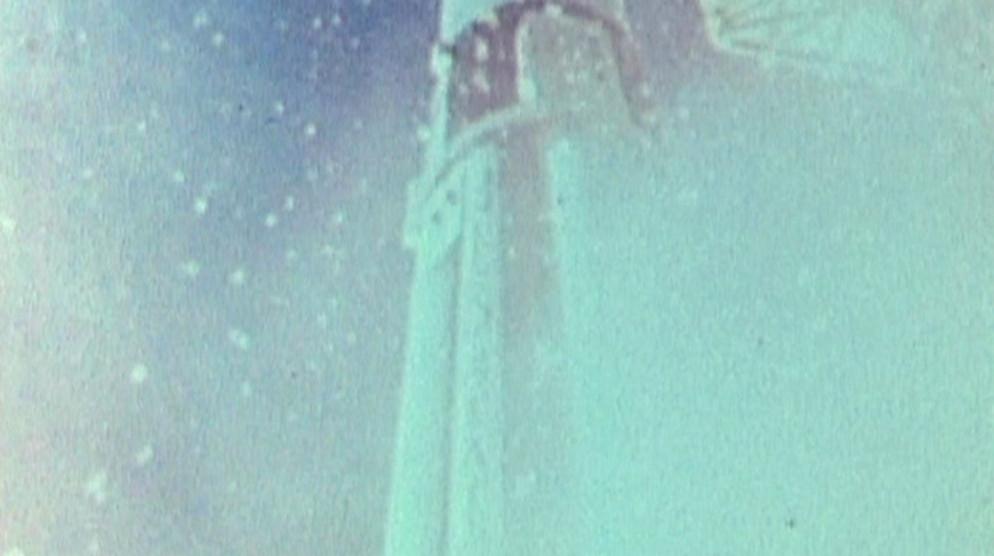
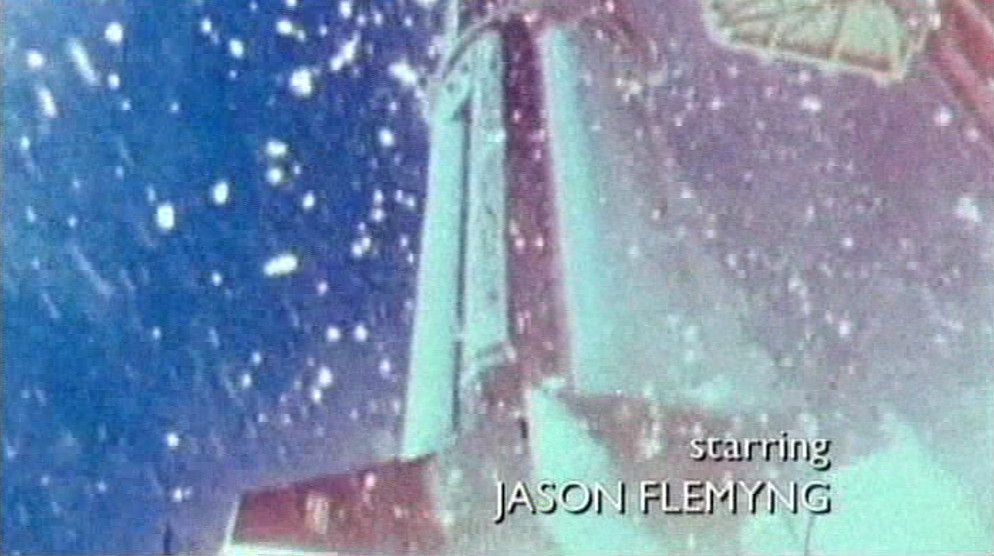

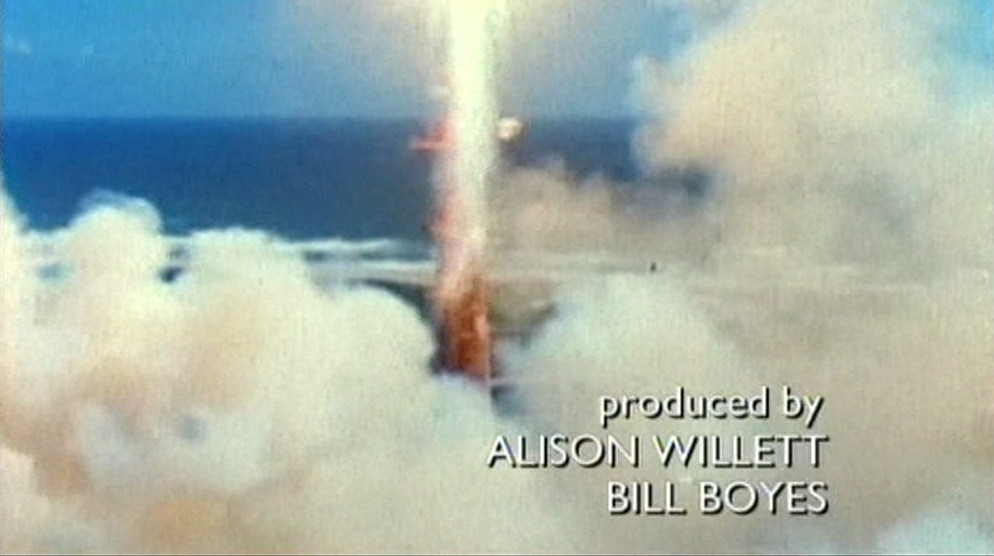
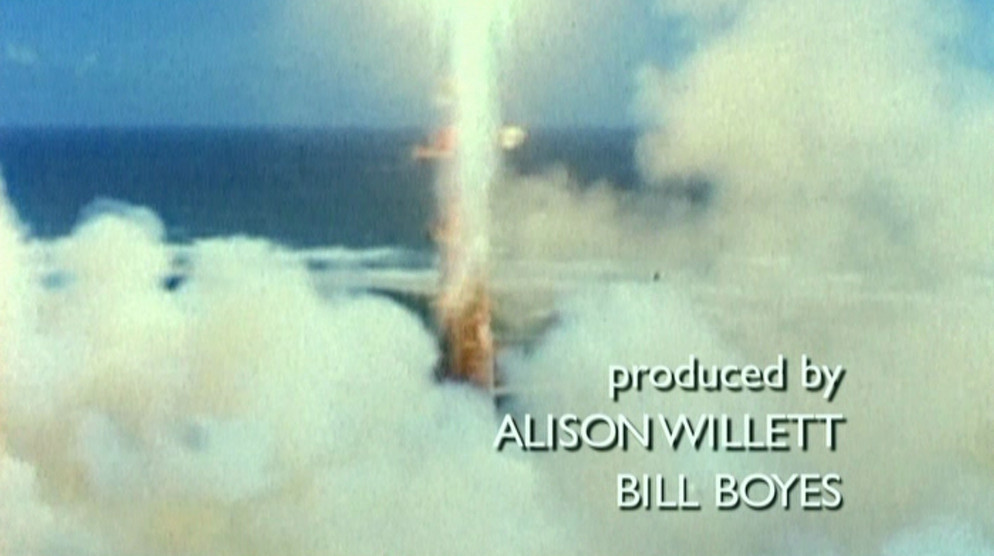

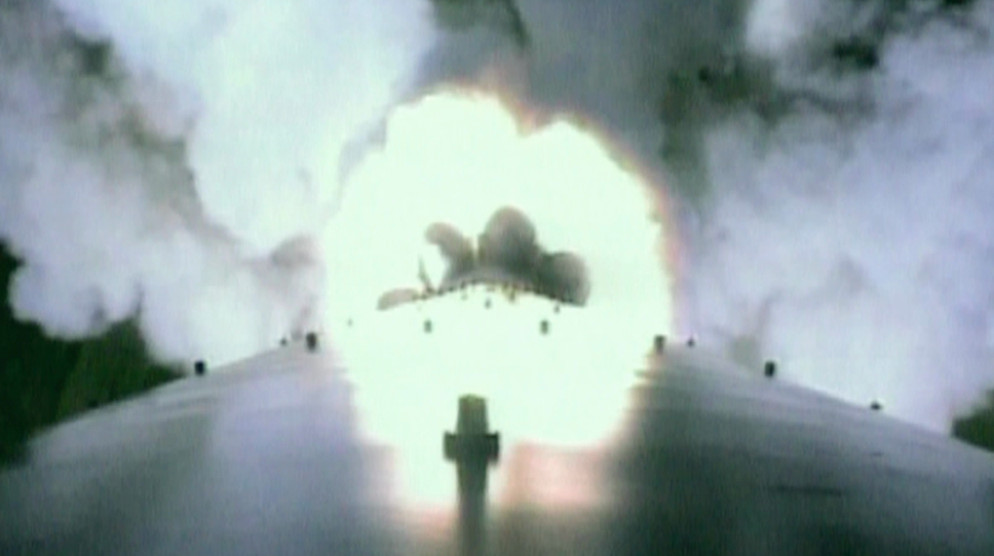

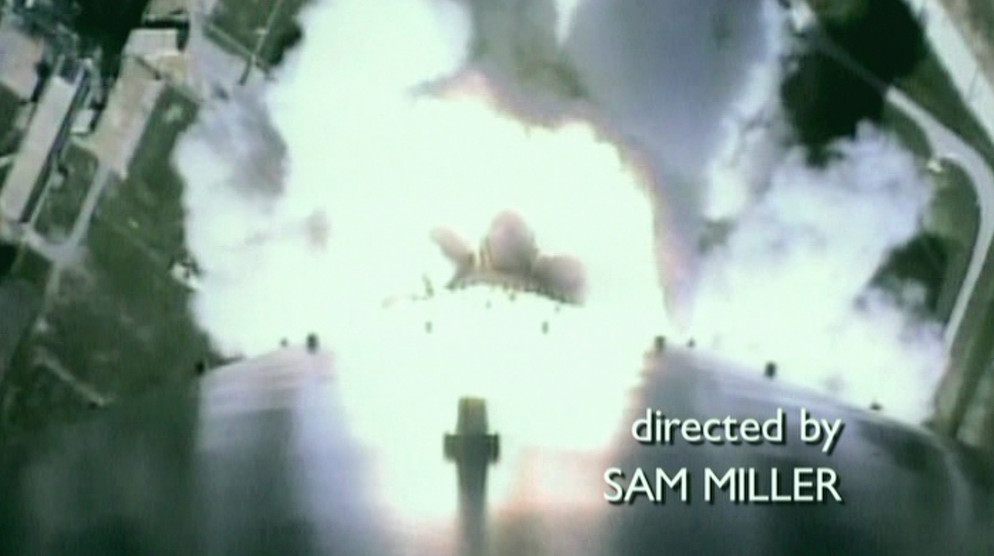
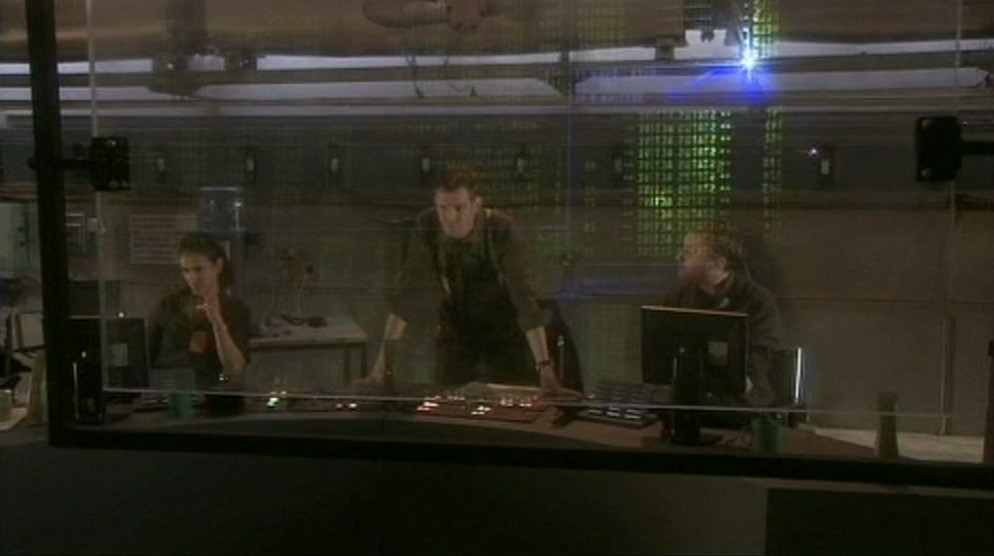
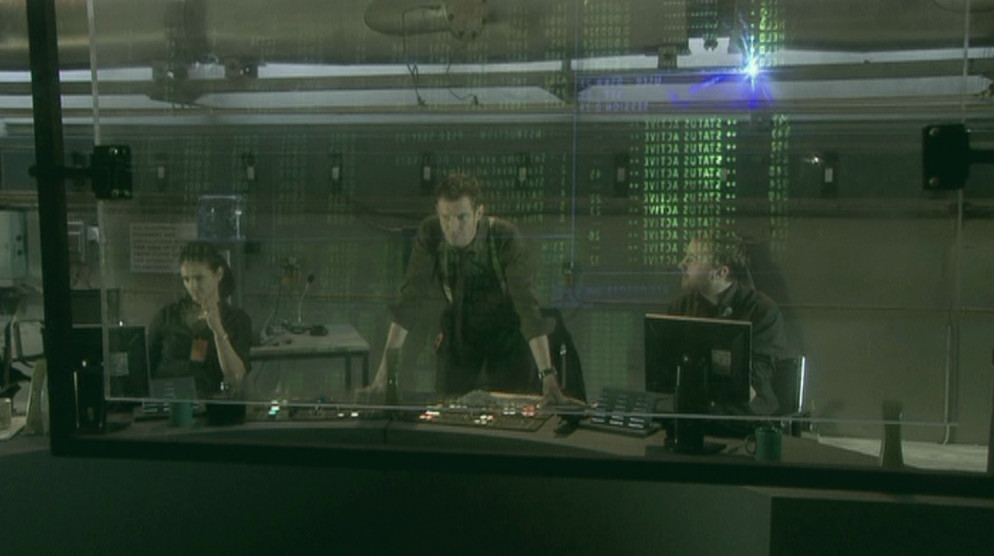
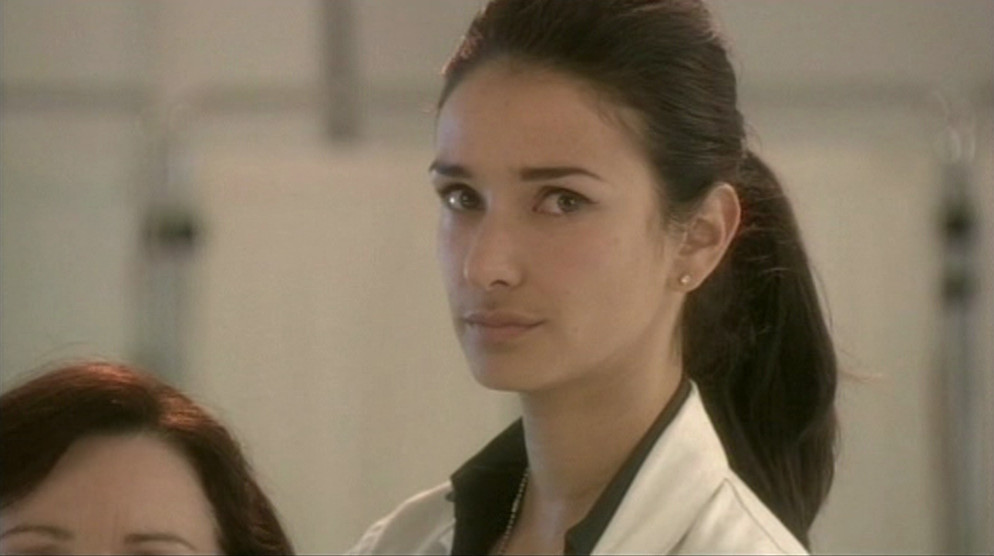

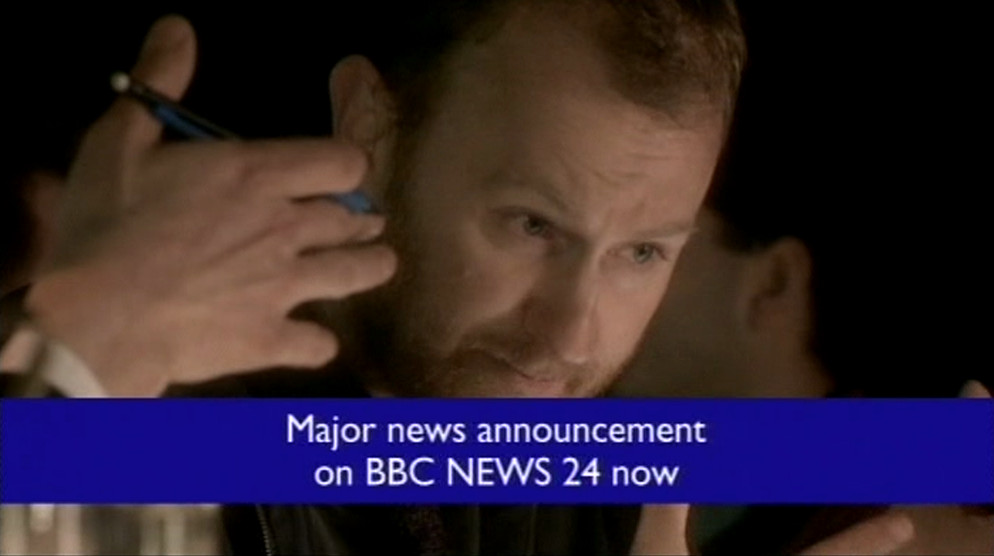
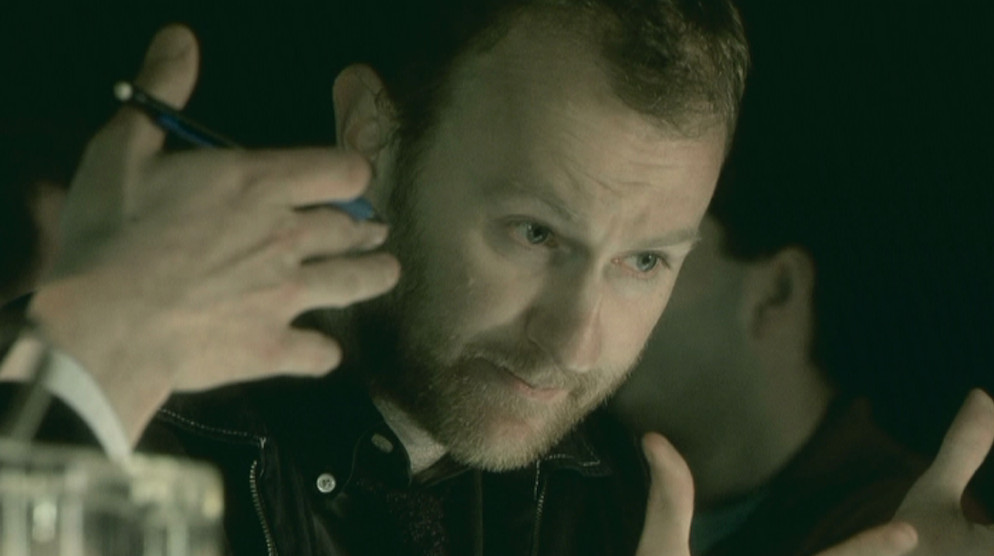
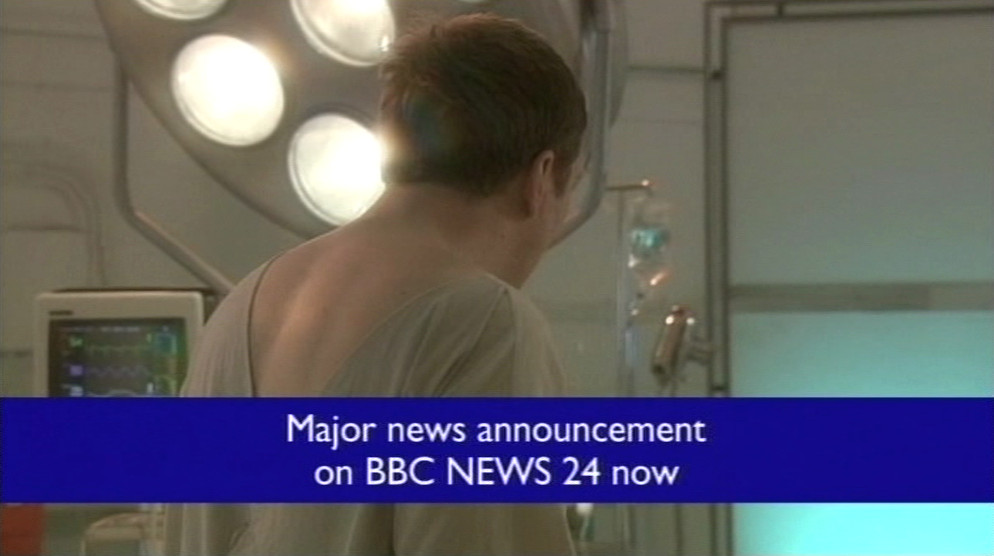
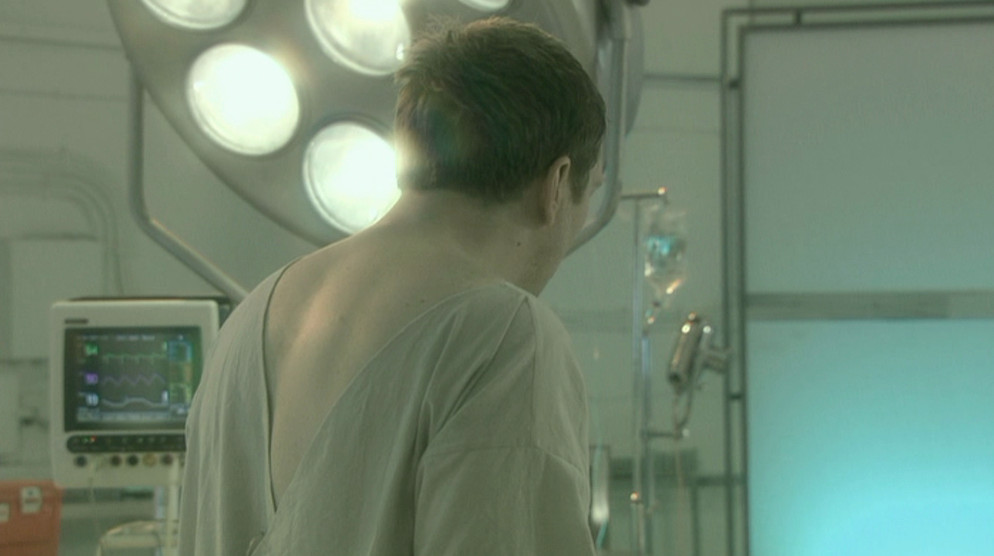
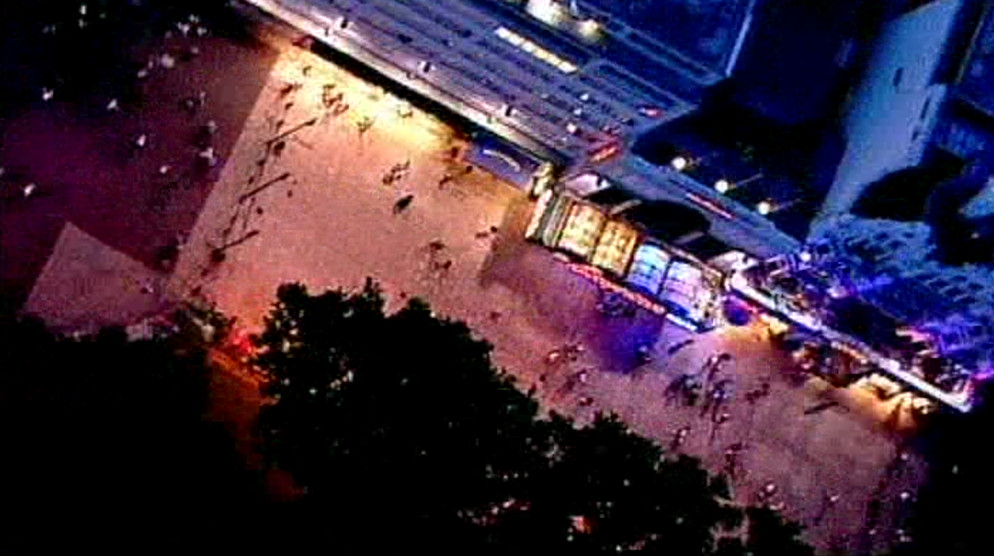
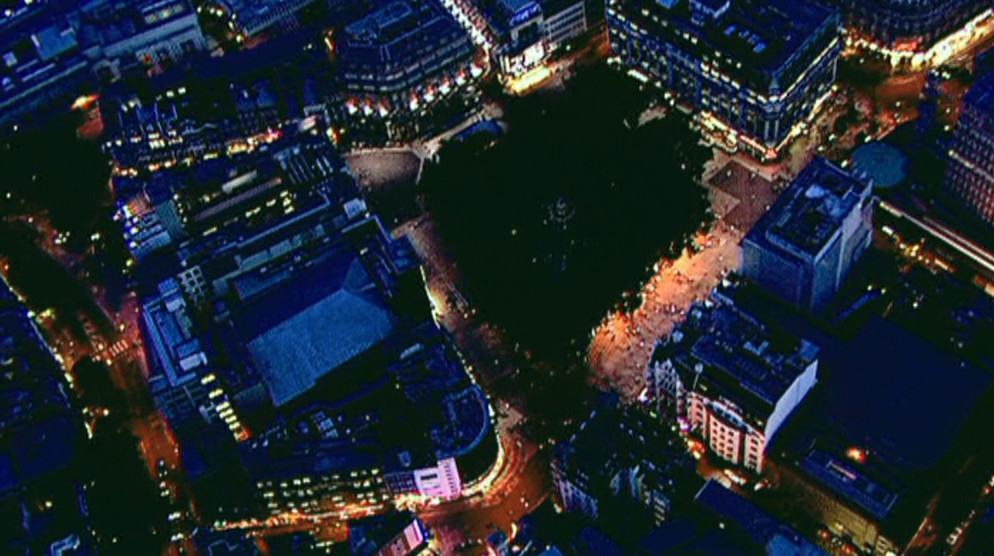
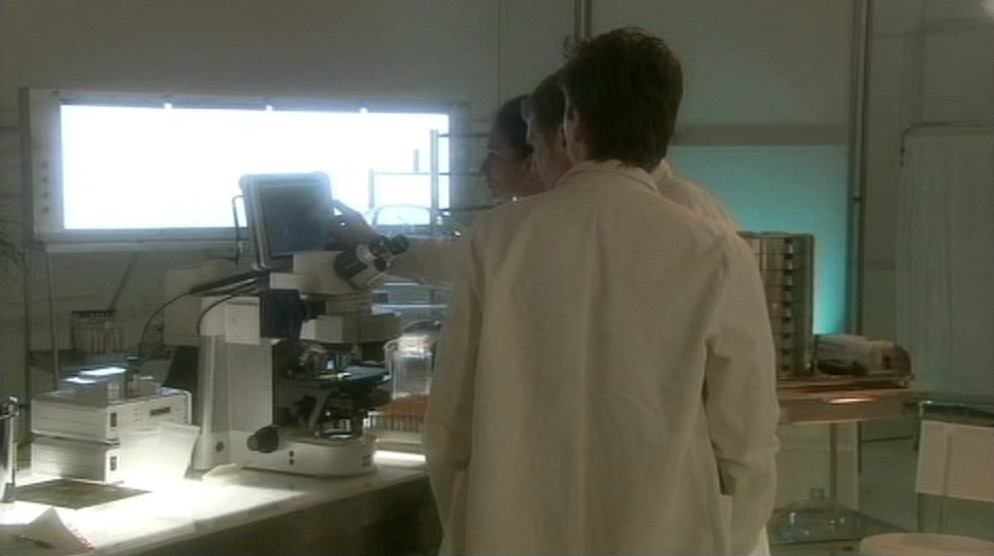

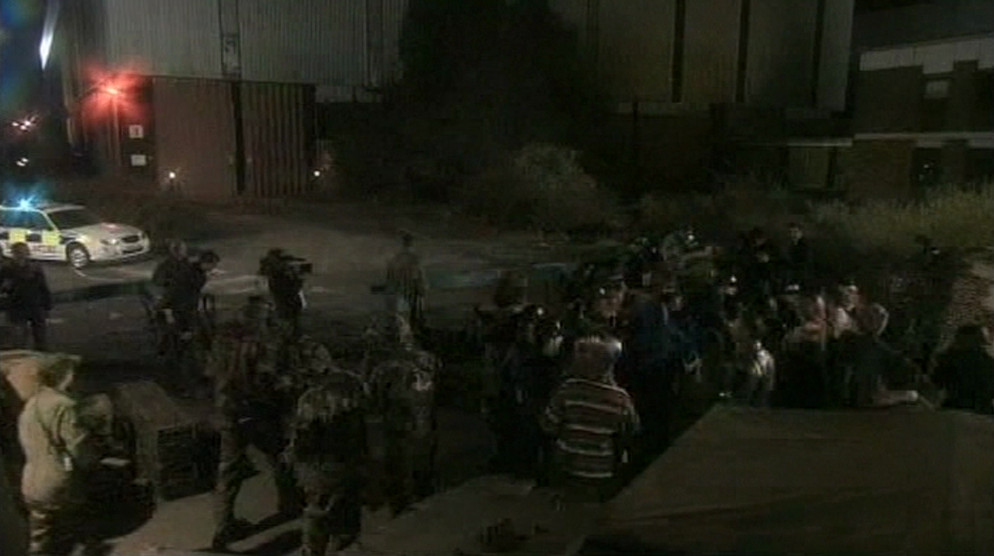
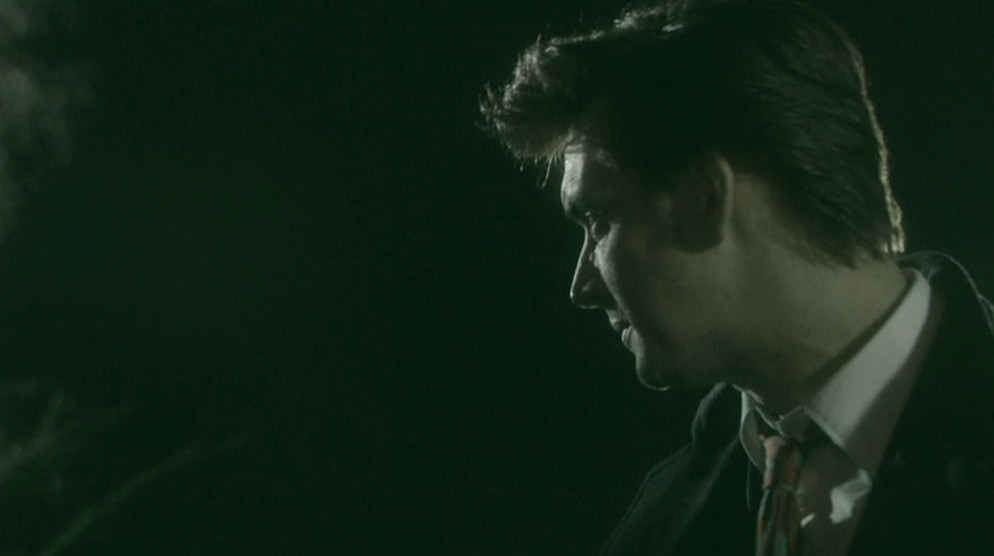
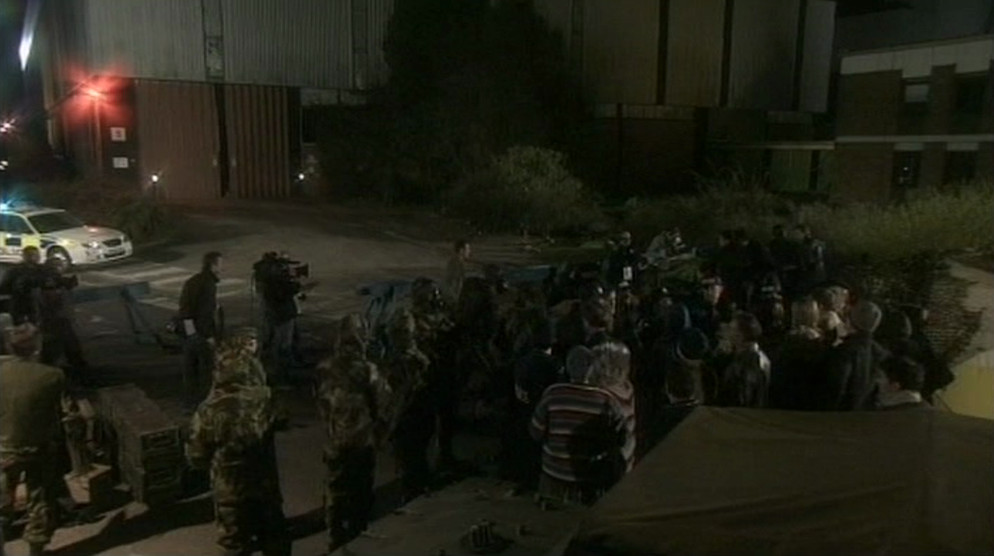
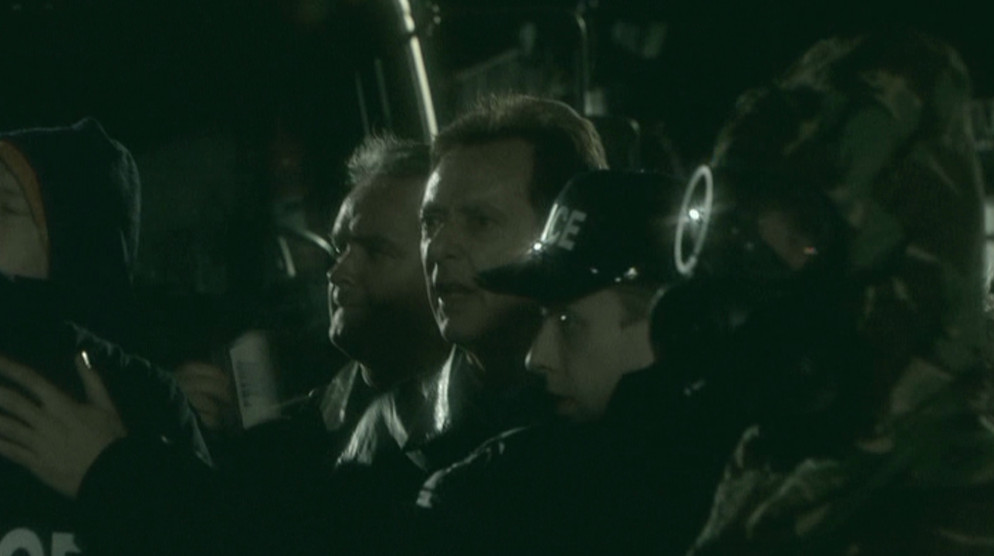
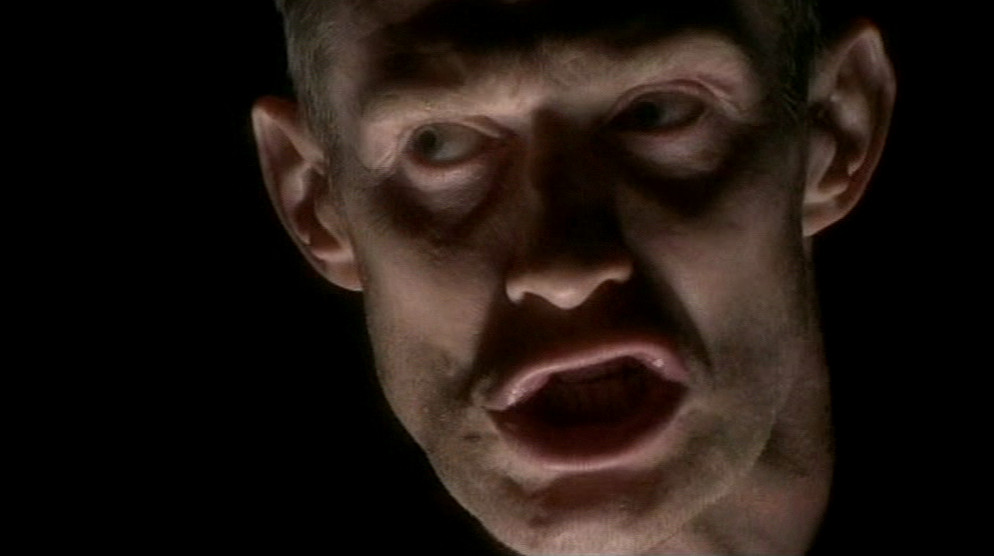
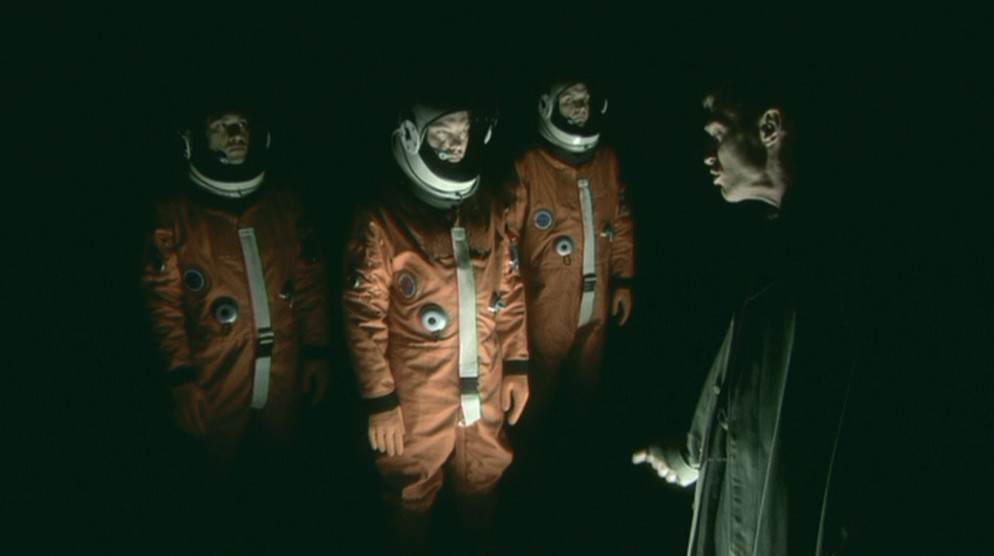
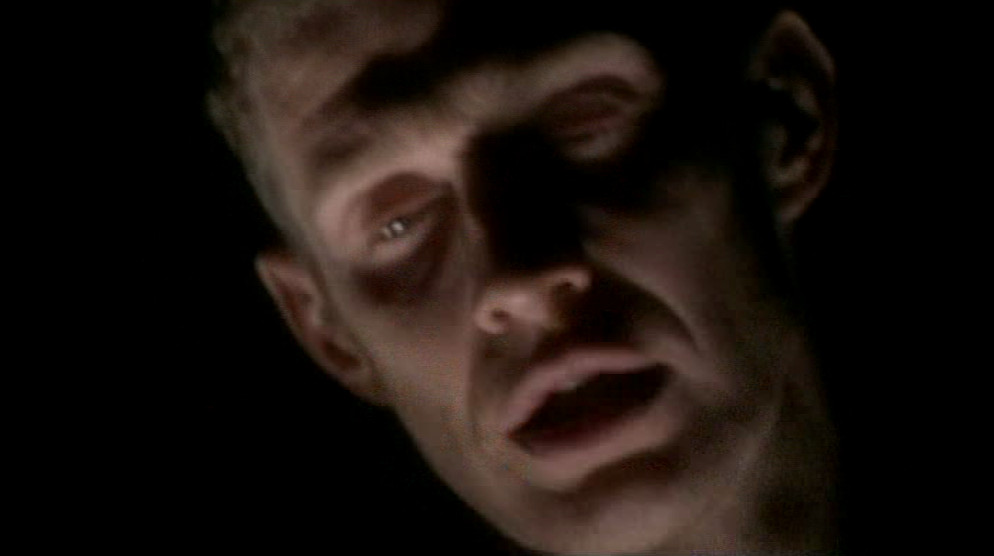
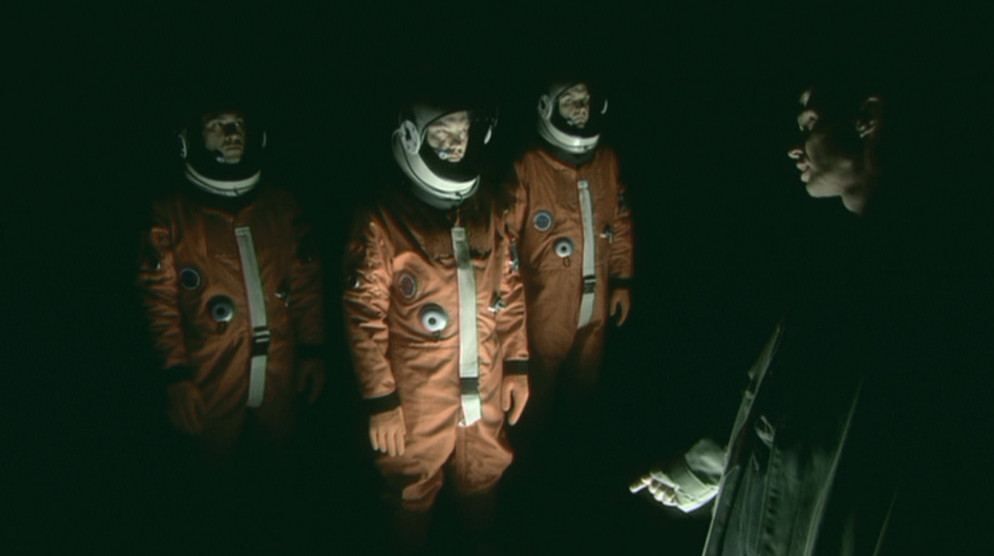


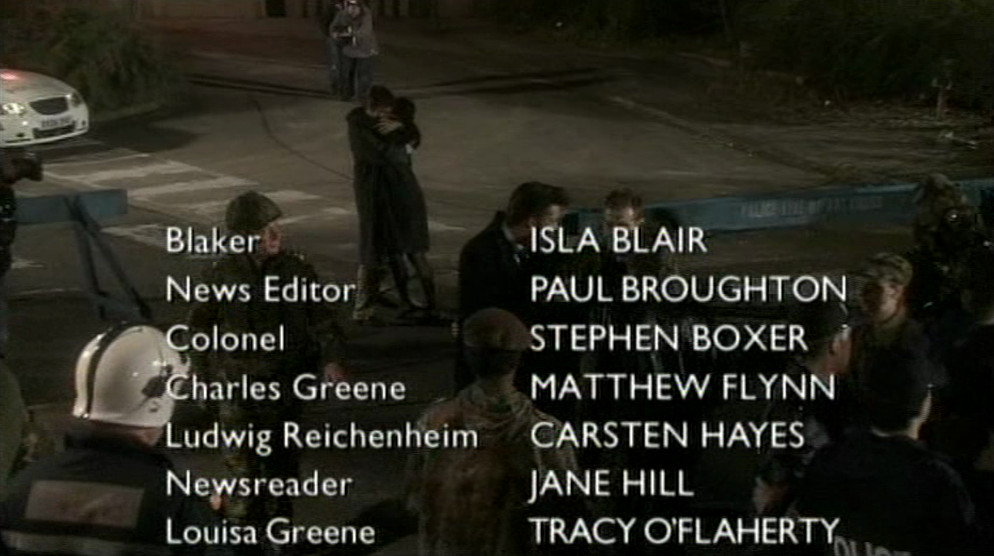
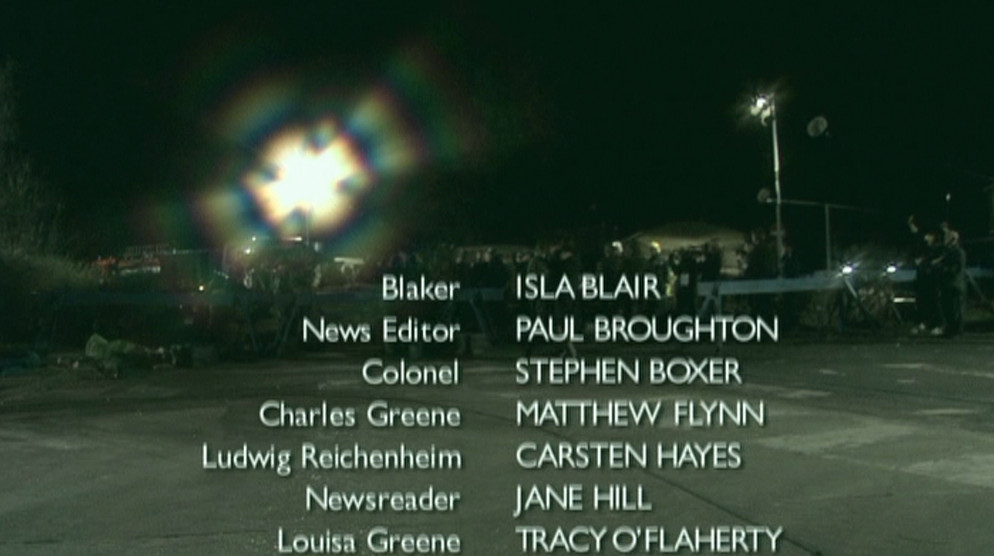

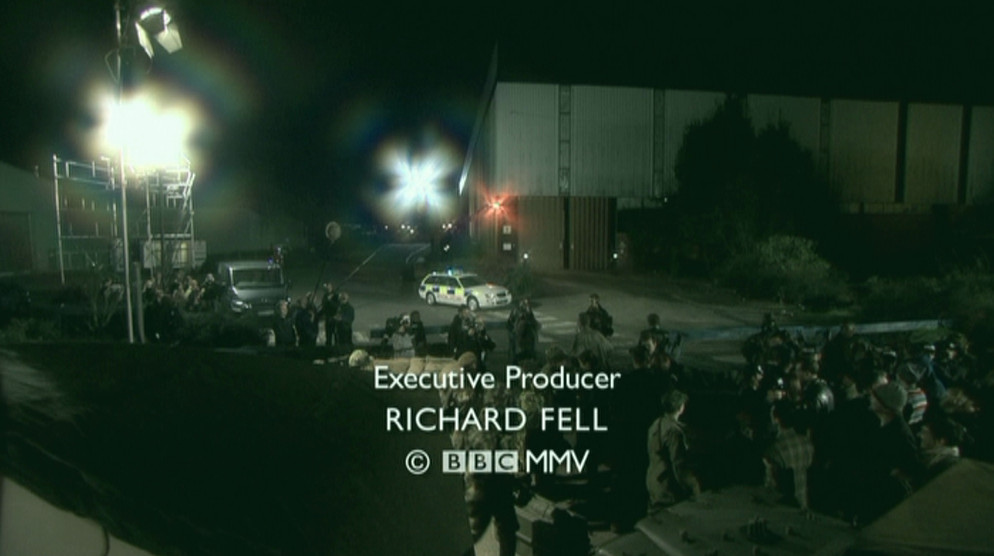
9 comments
Charlie Spotted on 20 December 2015 @ 6pm
Just wondering if the version available for download on the BBC Store is the same as the DVD?
Steve Reed on 21 December 2015 @ 10am
I’ve got both the original broadcast and the DVD release. Will have to go revisit both now. Great article thanks.
John Hoare on 21 December 2015 @ 5pm
I’m almost certain it will be, but don’t own it so can’t say for sure. (I refuse to buy stuff from the BBC Store until it stops requiring Silverlight.) If anyone can confirm, that would be great!
DS on 22 December 2015 @ 2pm
What the hell does “Drying” mean?
John Hoare on 22 December 2015 @ 2pm
Forgetting your lines.
Richard Talbot on 28 December 2015 @ 2pm
Another fantastic read John!
Time for another trip through the Dirty Feed archives to see if there’s anything I haven’t already read :)
John Hoare on 30 December 2015 @ 11am
Article now updated, with some further discussions about the breaking news straps.
Philip Hindley on 13 January 2016 @ 1pm
Very interesting,must have been painstaking to say the least, I commend you.
Paul on 5 March 2016 @ 3pm
It’s interesting to note that this isn’t entirely new for Quatermass – Rudolph Cartier did retakes after the live episodes of some of the original 1950s episodes had gone out, so better versions of scenes could be included in the same-week repeats of “Quatermass II”. I seem to recall from Andrew Pixley’s DVD booklet that at least one of the episodes of the second serial may even be *mostly* retakes.
Comments on this post are now closed.